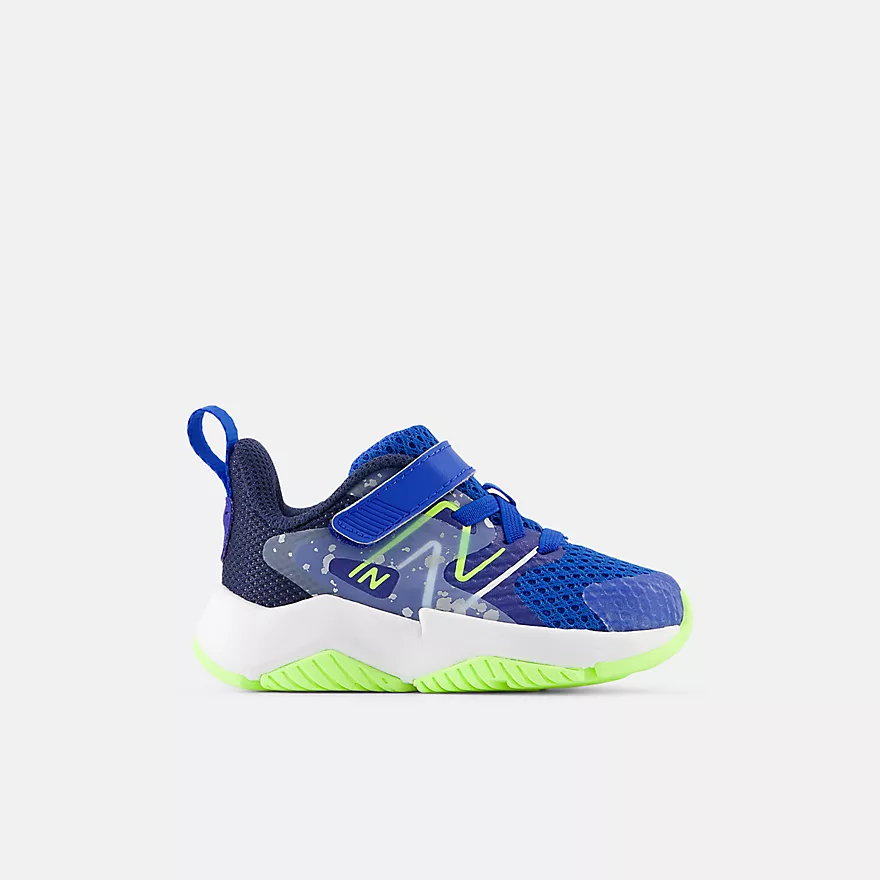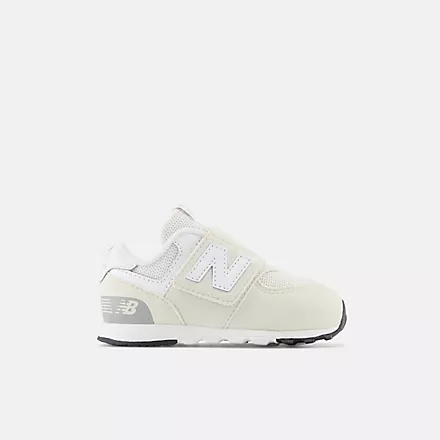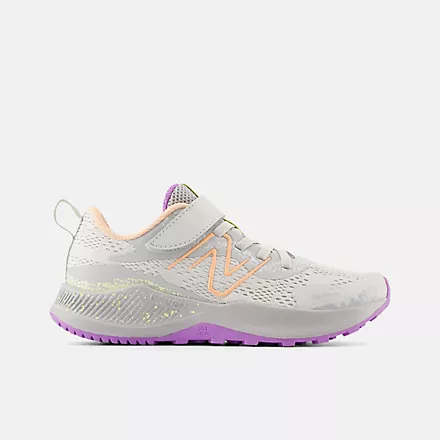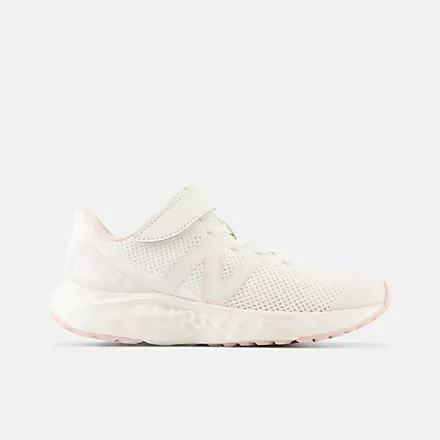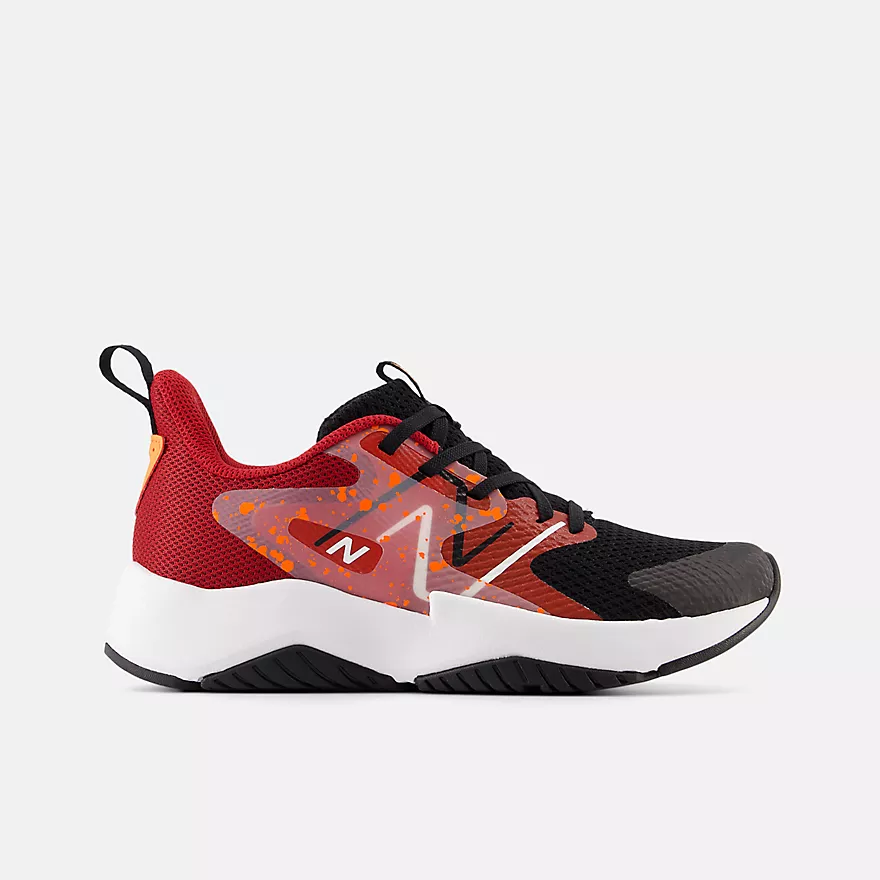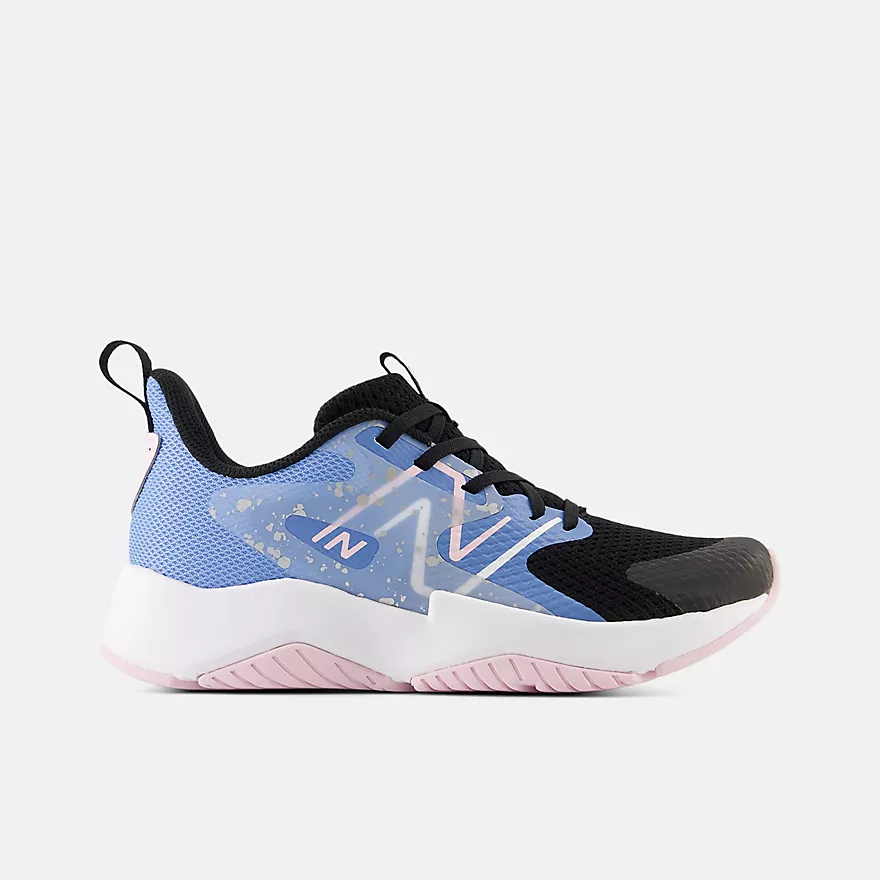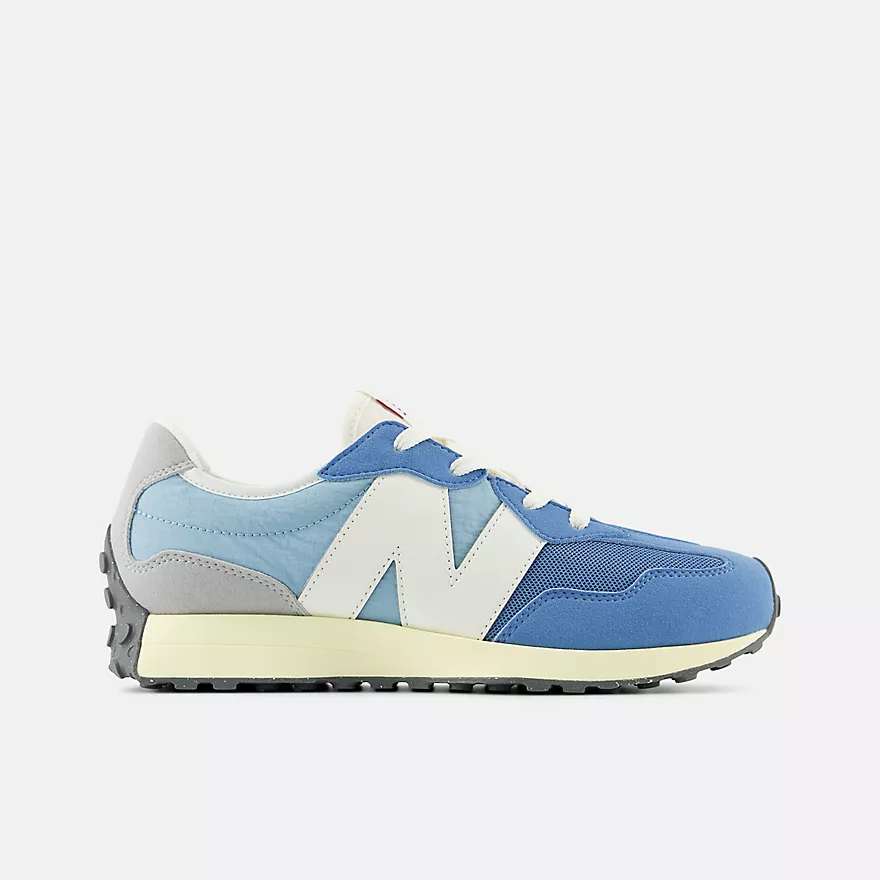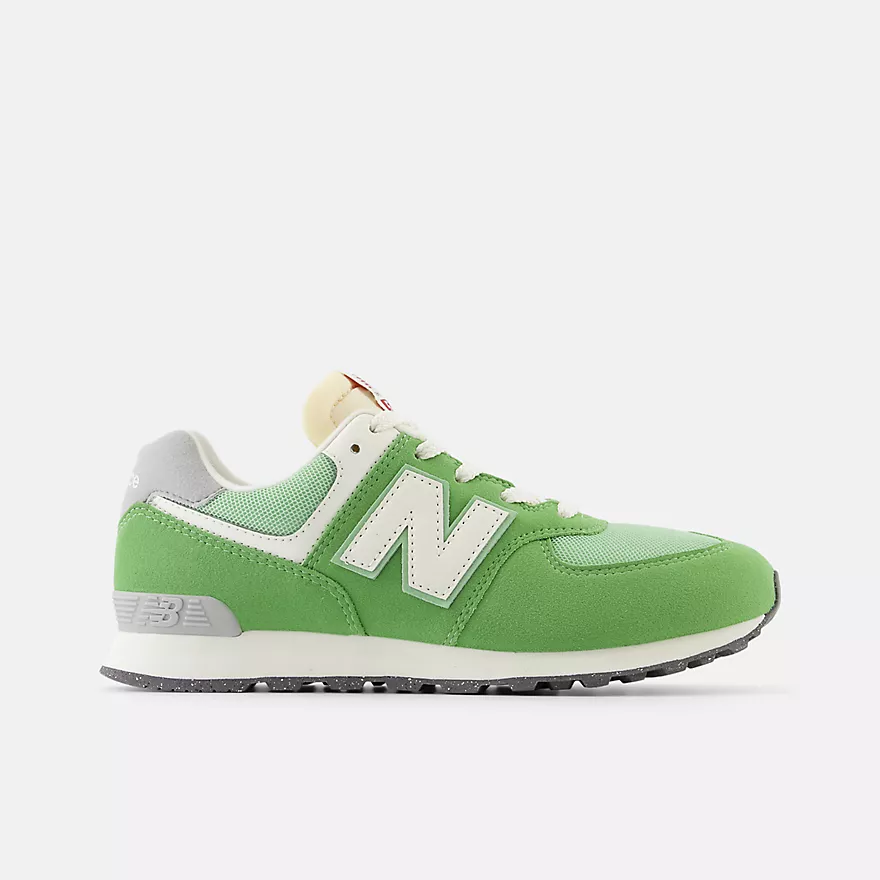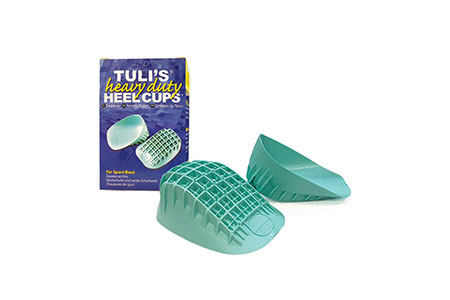The Best Kids’ Shoes for Haglund’s Deformity – Soft Heel Counter with Extra Cushion!
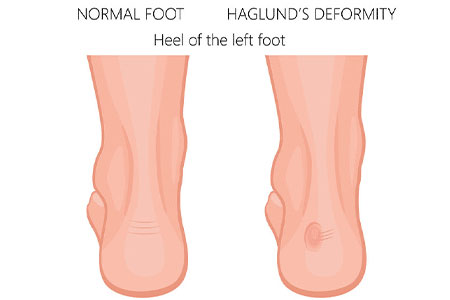
Do you have a child who has been complaining about heel pain? Have you noticed a large bump on the back of your child’s heels? If your child has been diagnosed with Haglund’s deformity, which is also referred to as “pump bump”, you need to take action immediately, since this is a progressive condition. I will show you a list of the best kids’ shoes for Haglund’s deformity based on my many years of shoe fitting experience.
What Is Haglund’s Deformity and How Can It Affect Your Child?
This condition affects your child’s soft tissue near the heel as well as the heel bone. The main issue with having this condition is that your child might develop a large bump around where the heel is, which is continually irritated by shoes that are too tight or too stiff.
The good news is that if you take the necessary steps you will be able to treat and prevent this condition, and it all starts by providing your child with the correct pair of shoes.
The main cause for this condition remains unclear, but ill-fitting shoes are often the main reason why children and adults experience Haglund’s deformity. Children who have high arches or supination and walk on the outside of their heels are also more prone to develop this condition.
Let’s start by taking a look at some of the most common signs that will help you determine whether your child might have Haglund’s deformity.
How to Figure Out If Your Child Has Haglund’s Deformity?
There are certain signs that will help you determine whether your child might have this condition or not:
1️⃣ Pain in the back of the heel when your child walks or runs.
2️⃣ A visible bump on the back of your child’s heels.
3️⃣ Swelling or redness on your child’s heels.
4️⃣ Calluses or blisters on your child’s heels where the bump rubs against the shoes.
Haglund’s deformity can occur in one or both feet.


How to Treat and Prevent Haglund’s Deformity – Shoes with Extra Padding!
To treat your child’s Haglund’s deformity, I recommend having your child wear shoes that don’t put pressure on your child’s heel as often as possible. Wearing open-backed shoes is recommended when your child is walking around the house or if you live in an area where it’s warm out. However, most school shoes and everyday shoes don’t come with an open-back.
The most important feature that your kids’ shoes must provide to help treat and prevent Haglund’s deformity is a soft heel counter that comes with extra padding and extra-cushion. Just so we are on the same page, the heel counter is the back part of the shoes. Take a look at the image below for clarification purposes:
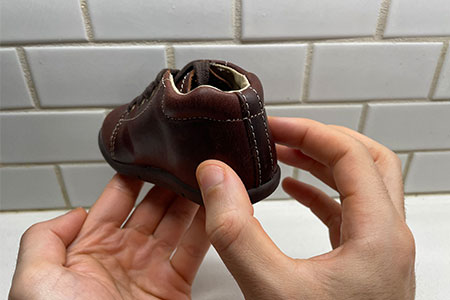
It’s important that you don’t provide your child with shoes that come with rigid or stiff heel counters since those types of shoes can cause friction and aggravate the condition.
Let me show you an image of a shoe that comes with extra padding and extra cushion around the heel counter:

This feature helps keep children’s feet comfortable and helps cushion and prevent your child’s bump from rubbing against the back of the shoes.
Figuring Out Your Child’s Exact Foot Size
Before I provide you with a selection of the best shoes for kids with Haglund’s deformity, I want to make sure that you know your child’s exact foot size. If you don’t provide your child with the correct shoe size, and your child wears shoes that are too long or too short you will be making the condition worse.
Shoes that are too long or too wide will allow for too much foot movement inside the shoes, and that constant friction and rubbing will worsen your child’s foot conditions. On the other hand, shoes that are too short or too narrow will cramp your kids’ toes, which in addition to putting extra pressure on your child’s heel bump, it will also lead to blisters, calluses, and corns.
I actually created an article that describes the simplest, yet most effective way to help you determine your child’s exact foot size from home.
Now that you know how to figure out your child’s foot size, you are ready to take a look at a selection of the best shoes for kids with Haglund’s deformity. Disclosure: Keep in mind that we may receive commissions when you click our links and make purchases.
The Best Shoes for Kids with Haglund’s Deformity
These shoes are available in different widths such as medium (M), wide (W), and extra wide (XW).
Toddler Shoe Sizes (0 to 10)
- Shoe style RaveRun by New Balance
- Available in medium, wide and extra wide widths
- Oversized opening for easy on and off
- Lightweight injection-molded EVA foam midsole provides lightweight cushioning
- Hook and loop closure
- Order this shoe a whole size larger than your toddler’s current foot size
- Shoe style RaveRun by New Balance
- Available in medium, wide and extra wide widths
- Oversized opening for easy on and off
- Lightweight injection-molded EVA foam midsole provides lightweight cushioning
- Hook and loop closure
- Order this shoe a whole size larger than your toddler’s current foot size
- Shoe style Original Jazz Lite 2.0 by Saucony
- Available in medium and wide widths
- Velcro closure
- Leather and mesh upper for durability and breathability
- APMA Certified
- Traction pods on the outsole for serious grip
- EVA midsole for lightweight feel
- Order this shoe a whole size larger than your toddler’s current foot size
- Shoe style Ride 10 Jr by Saucony
- Available in medium, wide, and extra wide widths
- Velcro closure
- Leather and mesh upper
- Non-marking traction pods to help improve stability
- APMA approved
- Toe cap for extra durability
- Order this shoe a whole size larger than your toddler’s current foot size
- Shoe style 2510 by Tsukihoshi
- Fits medium and wide feet (fits high insteps)
- Velcro closure
- Removable insoles
- Lightweight and flexible
- Extra wide toe box allows natural splaying of toes for better balance, comfort, and foot health
- Long heel counter provides stability
- Machine washable
- Order this shoe the same size as your toddler’s current foot size (shoe fits long)
- Shoe style 2510 by Tsukihoshi
- Fits medium and wide feet (fits high insteps)
- Velcro closure
- Heel stabilizer provides lateral stability
- Removable insoles
- The insoles are Infused with natural Green Tea extract (no chemicals)
- Machine washable
- Order this shoe the same size as your toddler’s current foot size (shoe fits long)
- New Balance shoe style Fresh Foam 650
- Fits children with medium, wide, or extra wide feet
- Velcro closure
- Leather and mesh upper
- Mesh collar and tongue are padded with foam for a great fit and added comfort
- Extra deep
- Order this shoe a whole size larger than your toddler’s current foot size
- Shoe style 574 by New Balance
- Available in medium, wide, and extra wide widths (fits high insteps)
- Velcro closure
- Oversized opening for easy on and off
- Fresh Foam midsole cushioning is precision engineered to deliver an ultra-cushioned, lightweight ride
- Order this shoe a whole size larger than your toddler’s current foot size
- Shoe style Fresh Foam by New Balance
- Available in medium, wide and extra wide widths
- Oversized opening for easy on and off
- Lightweight injection-molded EVA foam midsole provides lightweight cushioning
- Hook and loop closure
- Order this shoe a whole size larger than your toddler’s current foot size
- Shoe style Sr Thompson by Stride Rite
- Available in medium and wide widths (fits high insteps)
- Velcro closure
- Ortholite memory foam footbeds
- Opens super wide which makes in and out easy
- Recycled material linings to help reduce odor
- Order this shoe half a size larger than your toddler’s current foot size
- Shoe style SRT Winslow by Stride Rite
- Available in medium and wide widths (fits high insteps)
- Velcro closure
- Toe cap reinforcement and bumptoe protection against stumbles
- Opens super wide which makes in and out easy
- Step-stabilizing design with comfy Ortholite memory foam footbeds
- Order this shoe half a size larger than your toddler’s current foot size
- Shoe style Fresh 574 by New Balance
- Available in medium, wide and extra wide widths
- Oversized opening for easy on and off
- No-sew overlays
- Order this shoe a whole size larger than your toddler’s current foot size
- See Kai Run shoe style Robyne
- Fits children with medium, wide, or extra wide feet
- Breathable textile lining and cushioned insole
- Double velcro straps for easy on and off adjustability
- Padded tongue and collar for added comfort
- Order this shoe a half size larger than your toddler’s current foot size
- See Kai Run shoe style Robyne
- Fits children with medium, wide, or extra wide feet
- Canvas upper
- Toe cap is durable for early steps
- Double velcro straps
- Oversized opening for easy on and off
- APMA approved
- Order this shoe half a size larger than your toddler’s current foot size
- Shoe style 574 New-b V1 by New Balance
- Available in medium, wide, and extra wide widths (fits high insteps)
- Velcro closure
- Generous toe box and instep to accommodate and support a first-walker’s needs
- Mesh and suede upper for durability and comfort
- Extra deep
- Order this shoe a whole size larger than your toddler’s current foot size
- Shoe style 574 New-b V1 by New Balance
- Available in medium, wide, and extra wide widths (fits high insteps)
- Velcro closure
- Generous toe box and instep to accommodate and support a first-walker’s needs
- Mesh and suede upper for durability and comfort
- Extra deep
- Order this shoe a whole size larger than your toddler’s current foot size
Little and Big Kid Sizes (10.5 to 7)
- Shoe style RaveRun by New Balance
- Available in medium, wide, and extra wide widths
- Velcro closure
- Synthetic and engineered mesh upper
- Stitched-on toe cap for extra durability
- Order this shoe a half size larger than your child’s current foot size
- Shoe style Nitrel v5 by New Balance
- Available in medium and wide widths
- Velcro closure
- Synthetic and engineered mesh upper
- Stitched-on toe cap for extra durability
- Order this shoe a half size larger than your child’s current foot size
- Shoe style Russell by See Kai Run
- Fits medium, wide, and extra wide feet (fits high insteps)
- Double velcro straps
- Removable, contoured, leather-lined footbed for breathability and comfort
- Lightweight and flexible
- Order this shoe a half size larger than your child’s current foot size
- Shoe style Robyn by See Kai Run
- Fits medium, wide, and extra wide feet (fits high insteps)
- Double velcro straps
- Removable, contoured, leather-lined footbed for breathability and comfort
- Lightweight and flexible
- Order this shoe a half size larger than your child’s current foot size
- Shoe style Velocity by Tsukihoshi
- Fits medium and wide feet (fits high insteps)
- Velcro closure
- Heel stabilizer provides stability
- Removable insoles
- The insoles are Infused with natural Green Tea extract (no chemicals)
- Machine washable
- Order this shoe the same size as your child’s current foot size (shoe fits long)
- Shoe style 3584 Rainbow by Tsukihoshi
- Fits medium and wide feet (fits high insteps)
- Velcro closure
- Removable insoles
- The insoles are Infused with natural Green Tea extract (no chemicals)
- Machine washable
- Order this shoe the same size as your child’s current foot size (shoe fits long)
- Shoe style Fresh Foam 650 Bungee by New Balance
- Available in medium, wide, and extra wide widths (fits high insteps)
- Velcro closure
- Mesh collar and tongue are padded with foam for a comfortable fit
- Fresh Foam midsole cushioning is precision engineered to deliver an ultra-cushioned, lightweight ride
- Order this shoe a whole size larger than your child’s current foot size
- Shoe style Fresh Foam Arishi v4 by New Balance
- Available in medium, wide, and extra wide widths (fits high insteps)
- Velcro closure
- Synthetic and engineered mesh upper
- Durable rubber outsole designed to withstand wear-and-tear
- Order this shoe a half size larger than your child’s current foot size
- Shoe style Arishi v4 by New Balance
- Available in medium, wide, and extra wide widths (fits high insteps)
- Velcro closure
- Mesh collar and tongue are padded with foam for a comfortable fit
- Fresh Foam midsole cushioning is precision engineered to deliver an ultra-cushioned, lightweight ride
- Order this shoe a whole size larger than your child’s current foot size
- The New Balance shoe style RaveRun is available for little and big kids
- Fits children with medium, wide, or extra wide feet
- Available in laces
- No-sew overlays for a sleek fit and feel
- Mesh collar and tongue are padded with foam for a great fit and added comfort
- Order this shoe half a size larger than your child’s current foot size
- The New Balance shoe style RaveRun is available for little and big kids
- Fits children with medium, wide, or extra wide feet
- Available in laces
- Leather and mesh upper
- No-sew overlays for a sleek fit and feel
- Order this shoe half a size larger than your child’s current foot size
- Shoe style Axon by Saucony
- Available in medium and wide widths
- EVA midsole provides increased shock attenuation, responsive cushioning and lasting durability
- Cushioned footbed
- Order this shoe a whole size larger than your child’s current foot size
- Shoe style Axon by Saucony
- Available in medium and wide widths
- EVA midsole provides increased shock attenuation, responsive cushioning and lasting durability
- Padded tongue and collar
- Cushioned footbed
- Order this shoe a whole size larger than your child’s current foot size
- New Balance shoe style Fresh Foam 880v12
- Fits children with medium, wide, or extra wide feet
- Lace-up closure
- Dual-layer midsole construction featuring top-bed foam cushioning and underfoot Fresh Foam X
- Order this shoe half a size larger than your child’s current foot size
- Shoe style 480 V1 by New Balance
- Available in medium and wide widths
- Lace-up closure
- Lightweight EVA midsole
- Leather and mesh upper for durability & breathability
- Order this shoe a whole size larger than your child’s current foot size
- Shoe style 327 by New Balance
- Available in medium and wide widths
- Lace-up closure
- FuelCell foam delivers a propulsive feel to help drive you forward
- Order this shoe a whole size larger than your child’s current foot size
- New Balance shoe style FuelCell Propel v5
- Fits children with medium, wide, or extra wide feet
- Dual-layer midsole construction featuring top-bed foam cushioning and underfoot Fresh Foam X
- Order this shoe a whole size larger than your child’s current foot size
- Shoe style 574 by New Balance
- Available in medium and wide widths
- Lace-up closure
- ENCAP midsole cushioning provides good arch and heel support
- Leather and suede upper
- Order this shoe half a size larger than your child’s current foot size
- New Balance shoe style Fresh Foam Arishi v4
- Fits children with medium, wide, or extra wide feet
- Lace-up closure
- Mesh upper is lightweight and breathable
- Lightweight EVA foam cushioning in the midsole and padded heel increases comfort
- Firm heel counter
- Supportive heel for active kids
- Order this shoe a half size larger than your child’s current foot size
In each of the descriptions of the shoes, I indicate whether you need to order a half size or a whole size bigger than your child’s current foot size to provide the correct amount of growing room.
These shoes all provide extra padding around the heel area to make sure that nothing stiff rubs against your child’s heel bump.
If your child is already wearing the correct type of shoes but still complains about pain and the condition doesn’t improve, then there is another approach we can take. There is a particular type of heel cup that is affordable and can be easily fitted inside your kids’ shoes for extra cushion and support.
Heel Cups for Haglund’s Deformity – Extra Cushion and Padding!
I have fitted a particular heel cup that has proven to be the most effective one when it comes to reducing the pressure on your child’s heels and keeping your child’s feet as comfortable as possible.
Tuli’s Heavy Heel Cups are the #1 Podiatrist recommended heel cups in the world and will provide your child with immediate heel pain relief by cushioning the area where the pain is located.
- Ideal to treat and prevent general heel pain, plantar fasciitis, Sever’s disease, excessive pronation, Achilles tendonitis
- Innovative multi-cell, multi-layer waffle pattern design, helps to absorb impact pressure (shock) and return impact energy back to the feet
- The extra cushion this heel cup includes reduces and prevents sore heels and shin splints
Small Size – Fits from a little kid shoe size 10.5 to a big kid shoe size 6.
Regular Size – Fits big kid shoe size 6 and above.
Heel cups don’t fit in any type of shoe. The shoes need to provide extra depth for the heel cup to fit deeply inside the shoes and don’t raise your kids’ feet. All of the shoes I recommended are capable of fitting heel cups.
Find Out How to Correctly Fit Heel Cups Inside Your Kids’ Shoes
If you want to know more details about what features this heel cup provides and how to fit it correctly inside your kids’ shoes, you can refer to another article.
Keeping your child’s feet healthy requires constant attention, and providing your children with the correct type of shoes is the first line of defense when it comes to keeping your child’s feet healthy.
When it comes to treating or preventing a child’s foot condition, I always recommend parents to be proactive and don’t take the “wait and see approach”. The earlier that you start taking care of your child’s foot conditions, the better. If this condition doesn’t improve your doctor might require surgery, so please make sure that you take the necessary steps to prevent this condition from getting worse.
The Importance of Wearing the Correct Types of Socks
One thing I almost forgot to mention is how the type of socks that you choose for your child play a key role in keeping your child’s feet healthy. Please avoid socks that are too thin. We need socks that provide good cushion to prevent the constant friction between your child’s bump and the back of the shoes. While I can’t get into too much detail about the best kids’ socks in this article, you can refer to another that has a selection of the most comfortable seamless socks for kids.
That article will also help you figure out how you can make sure that you provide your child with the correct sock size. Socks that are too long will end up bunching up below your kids’ feet and cause discomfort, while socks that are too short will end up cramping your kids’ toes and make your child more prone to develop blisters. You must fit your kids’ socks just right!
Additional Resources for Children with Haglund’s Deformity
I created a different article that describes the best sandals for kids with Haglund’s deformity.
Do not hesitate to contact me directly via email if you have any further questions or if you need a different pair of shoes for your child. My email address is:
Let us know if you have found a particular shoe that has been effective in treating and preventing your child’s Haglund’s deformity, that way other parents can benefit from your experiences.

